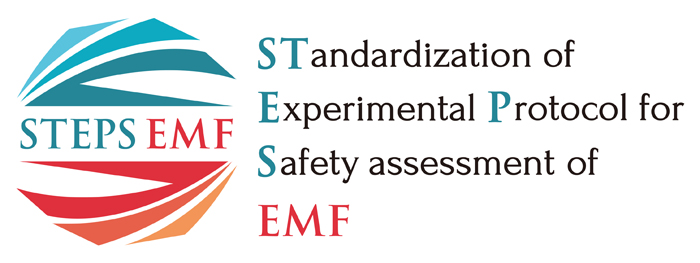Project report FY 2019 (in Japanese only)
https://www.tele.soumu.go.jp/resource/j/ele/body/report/pdf/r1_12.pdf
(full paper: about 30 MB)
[PDF] (excerpt: about 1.3 MB)
Project report FY 2020 (in Japanese only)
https://www.tele.soumu.go.jp/resource/j/ele/body/report/pdf/r2_12.pdf
(full paper: about 30 MB)
[PDF] (excerpt: about 1.2 MB)
Target frequency bands and details of the study:
[Extremely high-frequency band (30 GHz to 3 THz)]
Background:
As radio waves in extremely high-frequency band (30 GHz to 3 THz)* are assumed to be used in the fifth generation of mobile communication systems (5G), standardized research protocols for ensuring the safety of such frequency band for the human body are essential.
*Note: Radio waves around 28 GHz for 5G are also included in the project.
Objectives:
- To propose standardized designs and protocols of in vivo studies to assess possible health risks of exposure to extremely high-frequency band radio waves.
- To propose standardized designs and protocols of in vitro studies to assess possible health risks of exposure to extremely high-frequency band radio waves.
[High-frequency band (10 MHz to 30 GHz)]
Background:
Numerous in vitro, in vivo, or electrical engineering studies on the safety of radio waves in high-frequency band (10 MHz to 30 GHz) around the world have been conducted. In recent years, several papers focusing on research quality have been reported, illustrating the importance of the standardization of test protocols.
Objectives:
- To propose standardized study methods based on an analysis of existing studies/reports on the possible health risks of exposure to high-frequency band radio waves.
[Intermediate frequency band (10 kHz to 10 MHz)]
Background:
Assuming the use of the radio waves in the intermediate frequency band (10 kHz to 10 MHz) in wireless power transfer technologies, standardized research protocols for ensuring the safety of such frequency band for the human body are essential.
Objectives:
- To propose standardized designs and protocols of in vivo studies to assess possible health risks of exposure to intermediate frequency band radio waves.
- To propose standardized designs and protocols of in vitro studies to assess possible health risks of exposure to intermediate frequency band radio waves.
Advisory committee:
An expert advisory committee will be established to support the project.
This project is financially supported by
the Ministry of Internal Affairs and Communications of Japan.









